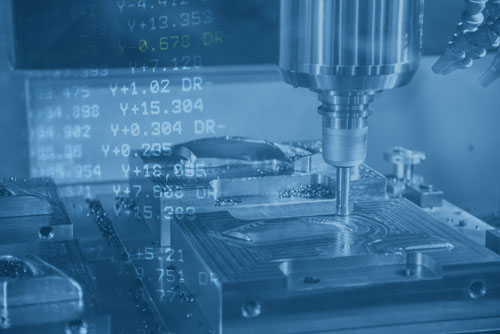There are three kinds of compensations in CNC machining: these three kinds of compensations can basically solve the trajectory problem caused by the shape of the tool during machining. The following is the application of three kinds of compensation in general machining programming.
Tool Length Compensation
1. The concept of tool length
Tool length is an important concept. When programming a part, we must first specify the programming center of the part, and then establish the workpiece programming coordinate system, and this coordinate system is only a workpiece coordinate system, and the zero point is generally on the workpiece.
The length compensation is only related to the Z coordinate. It is not like the programmed zero point in the X and Y planes. Because the tool is positioned by the spindle taper hole and does not change, it is different for the zero point of the Z coordinate.
The length of each knife is different, for example, we want to drill a hole with a depth of 50mm, and then tap a depth of 45mm, using a drill with a length of 250mm and a tap with a length of 350mm. First, use the drill to drill a hole with a depth of 50mm. At this time, the machine tool has set the zero point of the workpiece. When the tap is replaced, if both knives start processing from the set zero point, the tap is longer than the drill and the tapping is too long, which will damage the tool. and artifacts.
At this time, if the tool compensation is set, the length of the tap and the drill is compensated. After the zero point of the machine tool is set, even if the lengths of the tap and the drill are different, due to the existence of compensation, when the tap is called to work, the Z coordinate of the zero point has been automatically moved to Z+ (or Z) compensates the length of the tap and ensures the correct machining zero point.

2. Use of tool length compensation
The tool length compensation is realized by executing commands including G43 (G44) and H, and at the same time we give a Z coordinate value, so that the tool moves to a distance Z from the workpiece surface after compensation. Another command G49 cancels the G43 (G44) command. In fact, we don’t need to use this command, because each tool has its own length compensation. When changing the tool, the G43 (G44) H command is used to give its own tool length compensation. The length compensation of the previous tool is automatically canceled.
3. Tool length compensation G43, G44, G49
The system stipulates that in addition to the Z axis, other axes can also use tool length compensation, but it also stipulates that the length compensation can only be added to one axis at the same time. To switch the compensation axis, the compensation for the previous axis must be canceled first.
(1) Instruction format:
G43α___H___; (α refers to any axis of X, Y, Z), tool length compensation “+”.
G44α___H___; Tool length compensation “-“.
G49 or H00: Cancel tool length compensation.
In the command, use G43 and G44 to command the offset direction, and use H to command the offset number of the offset memory; G43 command is called forward compensation, that is, when G43 is used to specify a positive value for the tool length compensation value, the tool will follow the forward direction. move. The G44 command is called negative compensation, that is, when G44 is used to specify a positive value for the tool length compensation value, the tool moves in the negative direction. G43 and G44 are modal G codes. They are valid until the G code of the same group is specified. Before executing the program, it is necessary to store the corresponding offset value in the offset memory corresponding to the address H. Taking z-axis compensation as an example, if the command GOO G43 Z100.0 H01; and “-200.0” is stored in H01, the Z coordinate value 100. and the “-200.” stored in H01 will be used when this command is executed. “+” operation, that is, 100.0+(-200.0)=-100, and take the result as the Z-axis movement value. When a different tool is called in the machining program, the original tool compensation must be canceled first, and then the newly called tool length should be compensated. Before the end of the program, remember to insert the cancel command G49 or H0.


